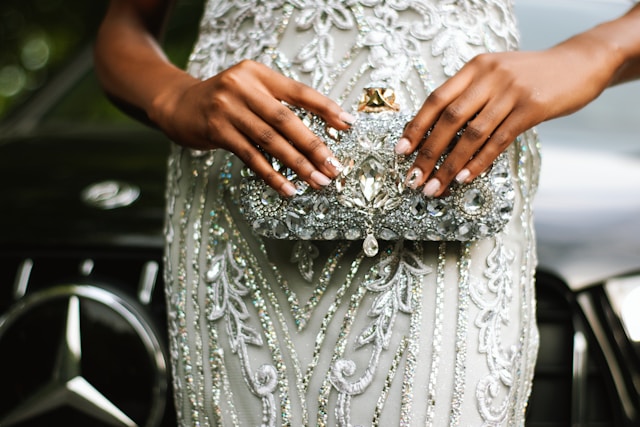Frizzy tresses can be an exasperating experience in your beauty and hair care routine, with 62% of women describing it as the most frustrating hair malfunction. To deal with this situation, you may sometimes resort to using countless products, which would rather worsen the situation. Thankfully, it is still possible to have healthy hair. It starts with knowing some factors that could cause frizzled hair and how to avoid or deal with them. Below are six surprising causes worth noting.
- Humidity
If you’ve ever experienced uncontrollably frizzy hair on a humid day, you may have wondered whether your hair care routine is effective enough. However, this battle with frizz is largely due to humidity’s impact on your hair’s moisture levels. As you go about your daily beauty routines, remember that when the air is humid, your hair absorbs moisture, causing the hair shaft to swell and disrupt its natural smooth structure. As a result, your once beautifully styled hair transforms into a chaotic tangle of frizz. It sounds quite ironic knowing that your hair needs moisture to be healthy. However, the problem arises when there is excessive moisture. According to experts, your hair responds to the external environment, making it essential to be aware of your surroundings and the weather before stepping out. Remember to use an anti-humidity hair serum or cream with lightweight oils like argan oil to combat this in humid weather. They can act as barriers to prevent excess moisture from seeping into your strands.
- Lack of proper hydration
Lack of proper hydration can also damage your hair and leave it frizzy, thwarting your hair care routine. Dehydrated hair becomes more susceptible to frizz as it seeks to draw moisture from the surrounding environment. As mentioned earlier, your hair absorbs excess moisture in humid conditions, which results in frizz. However, in this case, your hair draws moisture from the surrounding environment because it is already dehydrated. Thankfully, you can keep frizz at bay using a hydrating shampoo and conditioner tailored to your hair type. Additionally, consider incorporating a deep conditioning treatment into your routine at least once a week to nourish and replenish your locks, sealing the cuticle and reducing the likelihood of frizz.
- Already damaged strands
If your hair is damaged, you may be more susceptible to frizziness. Over-processed, chemically treated, or heat-damaged hair lacks the necessary proteins and lipids to maintain a smooth and sleek appearance. Therefore, incorporating hair care products specifically designed for damaged hair into your routine can restore its health. These products include repairing masks, specific shampoos, and leave-in conditioners, which help reduce frizz and provide the foundation for a smoother, more manageable, healthy head of hair. You will find countless products claiming to be the best for damaged hair, so keep this in mind. However, it is best to read reviews and stick to reliable evidence when seeking the right hair care for damaged hair. The more you do this, the better informed you will be about what’s best for your hair type. For example, when you read widely about the types of hair shampoos on the market, you will know which ones are best for frizz and controlling your strands.
- Excessive use of hair tools and heat styling
As much as you love your trusty hair straighteners and curling wands, over-reliance on heat styling can contribute to frizziness. That is because frequent and excessive use of hot tools can strip your hair of its natural oils, leaving it vulnerable to frizz and breakage. If you’re used to such tools, apply a heat protectant spray before styling to reduce damage. On non-styling days, embrace your natural texture and give your hair a break to reduce frizz-causing stress on your tresses. It would also be a great help to learn different hair styling methods that don’t require heat tools. For example, putting your hair up in a neat bun or the French Twist ponytail can save you from relying on straighteners and curling tools. Thankfully, the internet holds a wealth of information on this subject matter, so it’s easy to rely on heat-free styles that prevent frizz.
- Vigorous towel-drying habit
After a refreshing shower, it’s tempting to vigorously towel-dry your hair, but this common practice can create friction and lead to frizz. Although you may often do this absent-mindedly, knowing more about this activity’s potential to damage your hair is advisable. If you’re wondering what to do instead of using a towel, opt for a gentler approach by blotting your hair with a microfiber towel or an old cotton T-shirt. These materials absorb excess water without roughing up your hair cuticles, and you don’t need to towel dry your hair vigorously to get the water out. That is what helps keep frizz under control. This practice is not restricted to an after-shower only. You can also experience this during summer when participating in your favorite activities like swimming. If you swim with your hair uncovered, remember to use the same gentleness to blot it dry. Treating your hair carefully from the beginning of your routine can significantly protect your hair against frizz.
- Choosing the wrong hair products
Sometimes, your challenges with frizz boil down to using the wrong hair products for your specific hair type and concerns. It’s essential to understand your hair’s unique needs and invest in quality hair care products that cater to them. Avoid products containing alcohol and harsh sulfates, as these can gradually deprive your hair of natural oils and exacerbate frizz. Instead, opt for smoothing, anti-frizz, or hydrating products to create a solid foundation for smoother, more manageable hair. Carefully reading the labels can help you determine this. Information can make all the difference in your hair care routine, especially if you desire healthy strands. It would also help to avoid using a product because it worked for a friend. Remember that hair textures are different, and what may have worked for another will likely not have the same results for you.
Cover photo by Yoann Boyer on Unsplash




